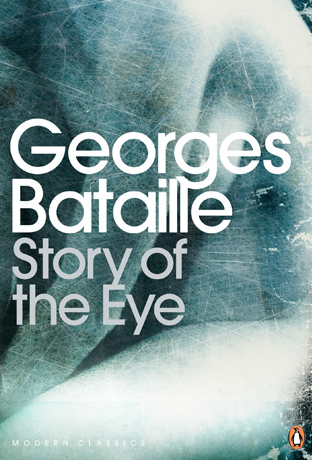Photographic Fictions
 Monday, June 8, 2009 at 1:23PM
Monday, June 8, 2009 at 1:23PM 
There is an empty space between Georges Bataille’s Story of the Eye (which invests every look with fantasy and converts every fantasy into a series of images) and the technological determinism of László Moholy-Nagy (a member of the Russian constructivist movement of the 1920’s): “Photography, then, imparts a heightened, or [in so far as our eyes are concerned] increased, power of sight in terms of time and space. A plain, matter-of-fact enumeration of the specific photographic elements — purely technical, not artistic, elements — will be enough to enable us to divine the power latent in them, and prognosticate to what they lead.” Richard Kostelanetz, ed., Moholy-Nagy (New York: Praeger, 1970) 52.
For Moholy-Nagy the activity of taking photographs and looking at them, encourages the human eye to evolve into a new state, with radically new goals. Moholy-Nagy proposes close parallels between the technological language of photography and such terms as, abstract seeing, exact seeing, rapid seeing, slow seeing, intensified seeing, penetrative seeing, simultaneous seeing and distorted seeing. To him these exemplify new configurations of human sight generated out of the relationship of technology and human activity. The camera so to speak is woven into the eye and it is Moholy-Nagy’s contention that the eye must as a result, change. A direct line is established between picture-taking, the image, vision (as response) and thought. This is in part why Moholy-Nagy privileges the scientific importance of photography and trivializes its artistic role. In contrast to Bataille, for whom the word and the image are located in the imaginary and for whom the imaginary is, so to speak, located in the eye, Moholy-Nagy seeks truth as the epistemological grounding for what is acceptable and what isn’t acceptable as image. “the real photographer has a great social responsibility. He has to work with these given technical means which cannot be accomplished by any other method. This work is the exact reproduction of everyday facts, without distortion or adulteration. This means that he must work for sharpness and accuracy. The standard of value in photography must be measured, not merely by photographic esthetics, but the human-social intensity of the optical representation.” (Kostelanetz 56)
The quote above must be understood as one of the key assumptions in the description of photography as a medium, the melding of scientific and aesthetic concerns around ideas of representation, the attempted fusion of technology and the eye. Moholy-Nagy anticipated the pivotal role of photography in generating scopic regimes which would validate cultural presumptions of truth. He could not have anticipated the way photography would evolve as a distinctive marker for temporal shifts, as an integral and strategic respondant and creator of historical discourses. Yet, he would have been aware that he was in fact creating a context for the photographic image which locates its truth value in the power of its reproductive aesthetic and its instrumental role. And he would have known that he was following the Cartesian imperative to rid the world of its optical illusions, to find truth in the visible and to make the visible truthful. For Moholy-Nagy, the mental, the physical and the real gain their strength from the image. The image becomes that schematic point of reference which allows technology to transcend the inconsistencies and weaknesses of the human eye. His was as much a technical as a pedagogical imperative. The aim was to use the image to teach some basic truths about the human condition, to strip away those categories of seeing which the “eye” of everyday life imposes on human subjectivity. In positing such a direct link between knowing and seeing, Moholy-Nagy makes use of a model of mind which enframes knowledge as visual and which constructs the mind as a mirror of the world around it. That model continues to resonate with some power in present day discussions of images, particularly with respect to the role of images in the media. Joel Snyder dissects the ideology which underpins this conception of the image in “Picturing Vision,” The Language of Images ed. W.J.T. Mitchell (Chicago: University of Chicago Press, 1980) 219-246.
 Moholy-Nagy,
Moholy-Nagy,  Perception,
Perception,  Photographs in
Photographs in  Cinema,
Cinema,  Photography
Photography 

